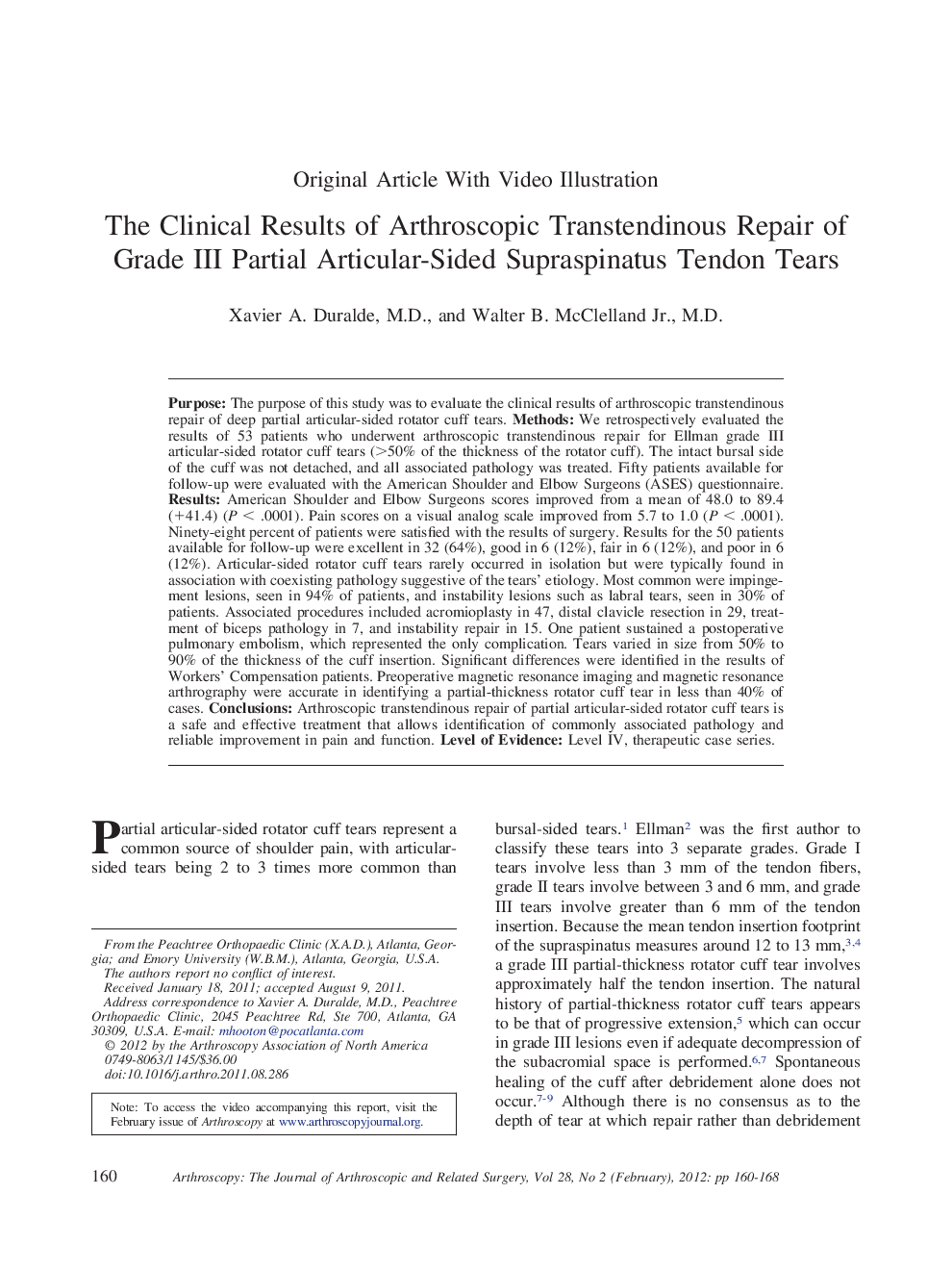| کد مقاله | کد نشریه | سال انتشار | مقاله انگلیسی | نسخه تمام متن |
|---|---|---|---|---|
| 4044984 | 1603532 | 2012 | 9 صفحه PDF | دانلود رایگان |

PurposeThe purpose of this study was to evaluate the clinical results of arthroscopic transtendinous repair of deep partial articular-sided rotator cuff tears.MethodsWe retrospectively evaluated the results of 53 patients who underwent arthroscopic transtendinous repair for Ellman grade III articular-sided rotator cuff tears (>50% of the thickness of the rotator cuff). The intact bursal side of the cuff was not detached, and all associated pathology was treated. Fifty patients available for follow-up were evaluated with the American Shoulder and Elbow Surgeons (ASES) questionnaire.ResultsAmerican Shoulder and Elbow Surgeons scores improved from a mean of 48.0 to 89.4 (+41.4) (P < .0001). Pain scores on a visual analog scale improved from 5.7 to 1.0 (P < .0001). Ninety-eight percent of patients were satisfied with the results of surgery. Results for the 50 patients available for follow-up were excellent in 32 (64%), good in 6 (12%), fair in 6 (12%), and poor in 6 (12%). Articular-sided rotator cuff tears rarely occurred in isolation but were typically found in association with coexisting pathology suggestive of the tears' etiology. Most common were impingement lesions, seen in 94% of patients, and instability lesions such as labral tears, seen in 30% of patients. Associated procedures included acromioplasty in 47, distal clavicle resection in 29, treatment of biceps pathology in 7, and instability repair in 15. One patient sustained a postoperative pulmonary embolism, which represented the only complication. Tears varied in size from 50% to 90% of the thickness of the cuff insertion. Significant differences were identified in the results of Workers' Compensation patients. Preoperative magnetic resonance imaging and magnetic resonance arthrography were accurate in identifying a partial-thickness rotator cuff tear in less than 40% of cases.ConclusionsArthroscopic transtendinous repair of partial articular-sided rotator cuff tears is a safe and effective treatment that allows identification of commonly associated pathology and reliable improvement in pain and function.Level of EvidenceLevel IV, therapeutic case series.
Journal: Arthroscopy: The Journal of Arthroscopic & Related Surgery - Volume 28, Issue 2, February 2012, Pages 160–168